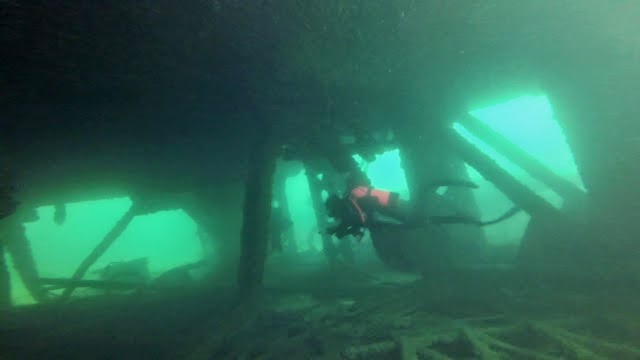Recently, a customer stopped in to inquire about purchasing a
120cuft tank for her husband. She
explained that she and her husband were newly certified divers and that her
husband consumed his air so much faster than her. In their travels to area dive shops, they had
been advised that he could even up his air time to match hers by getting a bigger
tank. While this definitely a solution, it is not the one I would have
suggested.
Poor air consumption can be tracked to poor fitness,
physical problems or lack of streamlining.
All of these issues need to be addressed to increase a diver’s air time,
but once issues are addressed, before I would suggest a bigger tank, I would
challenge the diver to address an even bigger cause of poor air consumption:
poor buoyancy.
 |
| Good buoyancy leads to better air consumption and more comfortable diving. |
We’ve all observed this in action; one diver bicycling along
in the water and another flailing his arms like a windmill. Look for these two to be back on the boat
long before the rest of the group. The
quickest exercise for a new diver to do that will give immediate feedback as to
their buoyancy is to dive in a horizontal position with arms crossed in
front. If the diver cannot maintain his
depth in this position, then some adjustment must be made.
If they are sinking add air.
Wait a bit for the added air to equilibrate to the surrounding
temperature, then reposition: horizontal, arms crossed. Repeat this process until the diver can
maintain the desired depth with minimal movement. Of course, if the diver is too positive, air
should be dumped, but remember that it is possible to dump a small amount of
air. After venting a small amount of air, the diver should exhale, then reposition,
etc.
I look at things like getting ankle weights if feet are too
buoyant or bigger tanks when air consumption is a problem as masks merely
covering the underlying problem. Scuba is like any other skill or hobby. To be good at it, one needs to practice and
continuously learn better technique. Walter
Elliott said, “Perseverance is not a long race: it is many short races one
after another.” I think this describes the journey that all of us take to good
buoyancy. We persevere though out fin
pivots and hovering exercises in class and then, after earning our
certification, we continue on that course to perfection.
If you want a bit of coaching on your buoyancy, we suggest
the Peak Perfomance Buoyancy course, or participation in this winter’s buoyancy
clinic. You may also want to check out
this month’s Dive Training magazine and read their pointers for good buoyancy.







